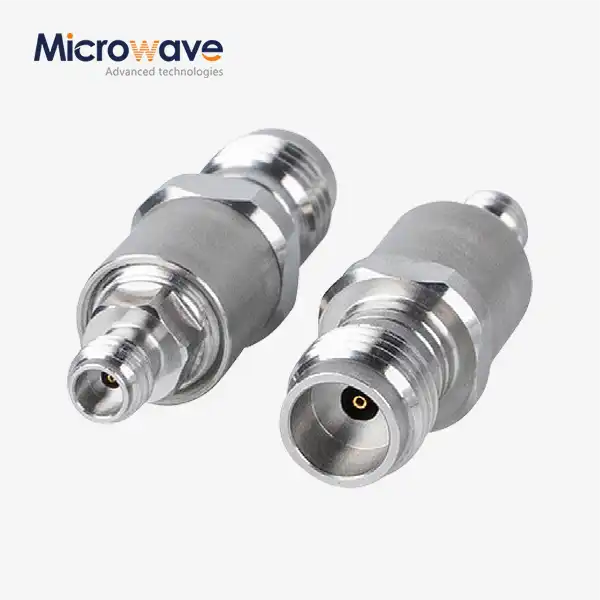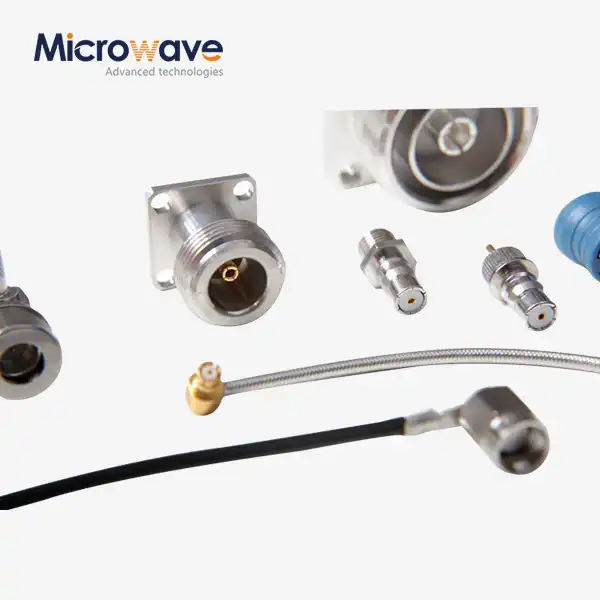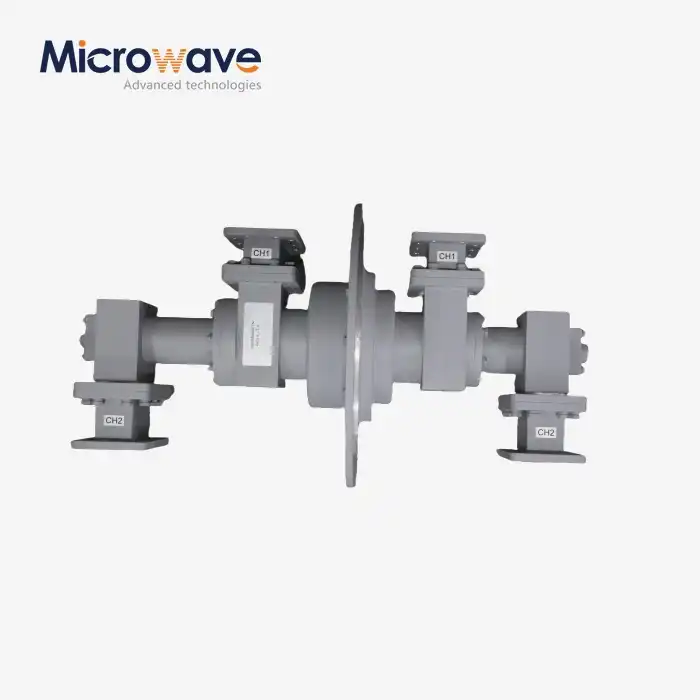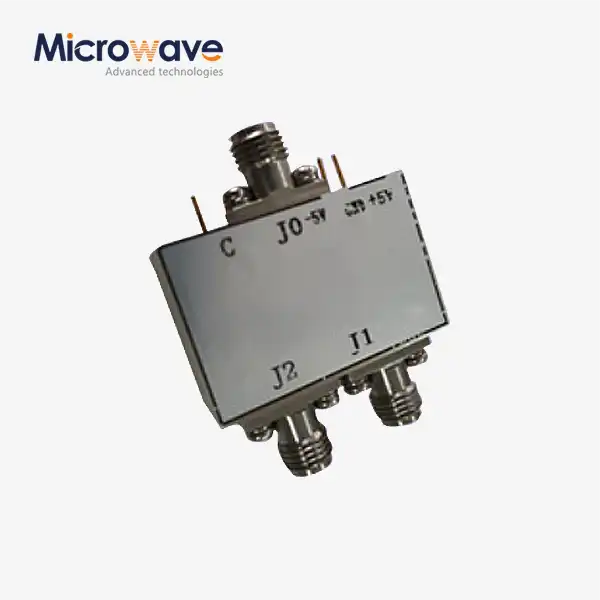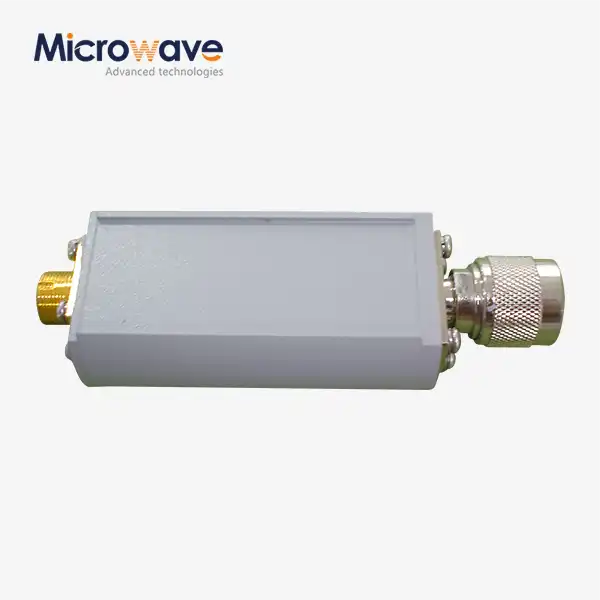How does the design of a dual channel coaxial rotary joint enable seamless signal transfer?
The design of a Dual Channel Coaxial Rotary Joint represents a marvel of precision engineering that fundamentally transforms how signals are transmitted across rotating interfaces. These specialized components enable the continuous transfer of RF signals between stationary and rotating parts of a system without interruption or degradation. Through innovative electromagnetic coupling mechanisms, advanced contact systems, and precision manufacturing techniques, Dual Channel Coaxial Rotary Joints maintain signal integrity while allowing for unlimited rotation. This capability is crucial for applications where continuous movement and reliable signal transmission must coexist, such as in radar systems, satellite communications, and industrial automation. By incorporating specialized impedance-matching structures and carefully engineered conductive pathways, these joints eliminate the issues of signal loss, reflection, and interference that would otherwise occur at rotational boundaries.
Innovative Design Elements That Enable Continuous Signal Flow
Advanced Contactless Coupling Technology
The heart of a Dual Channel Coaxial Rotary Joint's effectiveness lies in its contactless coupling technology. Unlike traditional mechanical connections that rely on physical contact points, advanced rotary joints employ capacitive or inductive coupling methods that eliminate physical wear while maintaining excellent signal transmission. This approach creates an electromagnetic field that bridges the rotating and stationary sections without direct contact, significantly enhancing longevity and reliability. The sophisticated design incorporates precisely calculated air gaps and specialized dielectric materials that maintain consistent impedance across the rotational interface. Advanced Microwave's Dual Channel Coaxial Rotary Joint implements this technology with exceptional precision, achieving insertion losses of ≤ 0.2 dB across its operational frequency range from DC to 40 GHz. This remarkable performance ensures that critical signals maintain their integrity even in applications requiring continuous rotation at speeds up to 100 rpm, making these components essential for systems where signal degradation cannot be tolerated, such as high-precision radar and communication platforms.
Precision Balanced Mechanical Systems
The mechanical foundation of a Dual Channel Coaxial Rotary Joint plays a critical role in ensuring seamless signal transfer. These joints incorporate high-precision bearing systems that maintain perfect alignment between rotating and stationary components while minimizing friction and mechanical resistance. The design employs sophisticated balancing techniques that eliminate wobble and ensure concentricity between the interface surfaces, maintaining consistent electrical performance throughout rotation. Advanced Microwave Technologies' rotary joints feature meticulously engineered bearing assemblies that support both the mechanical load requirements and the electrical performance specifications, with temperature tolerances ranging from -40°C to +85°C to accommodate diverse operational environments. The physical design incorporates carefully calculated clearances and tolerances that prevent signal disruption while ensuring smooth rotation. This mechanical precision enables the Dual Channel Coaxial Rotary Joint to deliver reliable performance even in high-vibration environments or applications requiring extended operational lifetimes, making them ideal for mission-critical systems in defense and aerospace applications where both mechanical reliability and electrical performance are non-negotiable requirements.
Integrated Multi-Channel Architecture
The multi-channel architecture of a Dual Channel Coaxial Rotary Joint represents a significant engineering achievement that enables simultaneous transmission of independent signals across a rotating interface. Unlike single-channel designs, these advanced components incorporate sophisticated isolation structures that prevent crosstalk between channels while maintaining optimal impedance matching for each signal path. The layered concentric design positions multiple transmission lines within a compact form factor, with each channel carefully engineered to maintain consistent 50-ohm impedance characteristics throughout the rotation cycle. Advanced Microwave's Dual Channel Coaxial Rotary Joint achieves impressive channel isolation while maintaining a compact and lightweight profile compared to waveguide alternatives. This integrated approach allows systems designers to reduce component count and simplify system architecture while improving reliability. The dual-channel capability is particularly valuable in modern communication systems that require separate transmit and receive pathways or systems that must handle multiple signal types simultaneously. With VSWR ratings of ≤ 1.25:1, these joints ensure that signal reflections are minimized, preventing interference between channels and maintaining signal purity for critical applications in satellite communications, radar systems, and advanced defensive platforms where multiple data streams must be transmitted simultaneously across rotating interfaces.

Material Science and Manufacturing Excellence
High-Performance Conductive Materials
The selection and implementation of conductive materials in a Dual Channel Coaxial Rotary Joint are crucial determinants of its signal transfer capabilities. Advanced Microwave Technologies employs specialized gold-plated beryllium copper alloys for critical contact surfaces, combining excellent conductivity with the mechanical durability required for rotating applications. These materials maintain consistent electrical properties across the entire operating temperature range (-40°C to +85°C) while resisting oxidation and corrosion that could compromise performance. The precisely machined conductive pathways ensure that RF signals encounter minimal resistance as they traverse the rotational interface, with surface treatments that optimize skin-effect behavior at high frequencies. This attention to material science enables the Dual Channel Coaxial Rotary Joint to achieve its impressive power handling capability of up to 500 W while maintaining exceptional signal fidelity. The materials are selected not only for their electrical properties but also for their thermal stability, ensuring that performance remains consistent even under variable load conditions. Additionally, Advanced Microwave's commitment to RoHS compliance ensures that these materials meet global environmental standards without compromising the electrical performance that mission-critical applications demand, making these components suitable for both commercial and military applications worldwide.
Precision Machining and Assembly Processes
The manufacturing excellence behind every Dual Channel Coaxial Rotary Joint is evident in the precision machining and assembly processes employed by Advanced Microwave Technologies. Each component undergoes multi-stage CNC machining with tolerances measured in microns to ensure perfect mating surfaces and consistent electrical performance. The assembly process incorporates specialized fixtures and calibrated torque sequences that maintain precise alignment between rotating and stationary sections. This manufacturing precision directly translates to electrical performance, enabling the rotary joint to maintain its specified insertion loss of ≤ 0.2 dB and VSWR of ≤ 1.25:1 across its entire operational frequency range from DC to 40 GHz. Advanced Microwave maintains ISO 9001:2008 certification, implementing rigorous quality control protocols that include 100% electrical testing of each Dual Channel Coaxial Rotary Joint before shipment. The company's dedication to manufacturing excellence ensures that each unit delivers consistent performance without the signal degradation that would result from manufacturing variations or assembly inconsistencies. This attention to manufacturing detail is particularly important for components destined for aerospace, defense, and satellite communication applications, where performance reliability directly impacts mission success and system capabilities in the field.
Environmental Resilience Engineering
A critical aspect of ensuring seamless signal transfer in a Dual Channel Coaxial Rotary Joint is its ability to maintain performance under challenging environmental conditions. Advanced Microwave Technologies implements sophisticated environmental resilience engineering in every component, incorporating hermetic sealing technologies that prevent contamination while maintaining electrical performance. The seals are designed to withstand pressure differentials and temperature cycling without compromising the internal precision components or allowing moisture ingress that would degrade signal quality. The entire assembly undergoes extensive environmental testing, including thermal cycling, humidity exposure, and vibration testing to verify performance stability across the full operating temperature range of -40°C to +85°C. This environmental engineering enables the Dual Channel Coaxial Rotary Joint to deliver consistent performance in applications ranging from space-based platforms to maritime radar systems where extreme conditions are the norm rather than the exception. The robust construction and environmental protection features ensure that signal transfer remains seamless even when exposed to the challenging conditions often encountered in military and aerospace applications. By addressing environmental challenges through advanced design and material selection, Advanced Microwave ensures that their Dual Channel Coaxial Rotary Joint maintains its electrical specifications and mechanical reliability throughout its operational lifetime, making these components ideal for deployment in mission-critical systems worldwide.

Application-Optimized Performance Characteristics
Enhanced Signal Integrity Maintenance
Signal integrity is paramount in high-performance RF systems, and the Dual Channel Coaxial Rotary Joint excels in this critical area through specialized design features that minimize signal degradation. Advanced Microwave's rotary joints incorporate precision impedance matching structures that maintain consistent 50-ohm characteristics throughout the signal path, eliminating the discontinuities that would otherwise cause reflections and power loss. The advanced contact systems and coupling mechanisms preserve signal waveforms without introducing phase distortion or amplitude variations during rotation, ensuring that data integrity is maintained even in high-speed digital transmission applications. With insertion losses limited to ≤ 0.2 dB, these rotary joints ensure that signal power reaches its destination without significant attenuation. The design incorporates specialized RF shielding that prevents external electromagnetic interference from corrupting signals as they traverse the rotational interface. This comprehensive approach to signal integrity enables the Dual Channel Coaxial Rotary Joint to support advanced modulation schemes and high data rates without introducing errors or degradation. For satellite communication systems that depend on uninterrupted data flow for mission success, this signal integrity preservation is essential. The combination of low VSWR (≤ 1.25:1), minimal insertion loss, and excellent isolation between channels ensures that each signal maintains its purity from input to output, regardless of the rotational position or speed of operation.
Broad-Spectrum Frequency Performance
The remarkable frequency range capability of Advanced Microwave's Dual Channel Coaxial Rotary Joint—spanning from DC to 40 GHz—represents a significant engineering achievement that enables these components to support diverse applications across multiple industries. This broad-spectrum performance is achieved through careful electromagnetic modeling and precise manufacturing techniques that maintain consistent impedance characteristics across the entire frequency range. The design incorporates specialized transitions and mode suppressors that prevent higher-order mode propagation that would otherwise degrade performance at higher frequencies. This frequency agility allows a single Dual Channel Coaxial Rotary Joint to support multiple system functions simultaneously, from low-frequency control signals to high-frequency data transmission, without requiring separate rotary interfaces. The consistent performance across this wide frequency range makes these components particularly valuable in test and measurement applications where frequency flexibility is essential. For aerospace and defense systems that operate across multiple bands, this broad-spectrum capability simplifies system architecture while improving reliability by reducing component count. Advanced Microwave's commitment to maintaining specified electrical performance across the entire operational frequency range ensures that these rotary joints deliver dependable signal transfer regardless of the specific frequencies employed by the host system, making them versatile solutions for complex RF systems in satellite communications, radar, and electronic warfare applications.
Optimized Power Handling Capability
The power handling capability of a Dual Channel Coaxial Rotary Joint directly impacts its application versatility, and Advanced Microwave Technologies has optimized this critical parameter to support demanding operational requirements. With power capacity ratings up to the 500 W level, these rotary joints can accommodate high-power transmission applications without performance degradation. This impressive power handling is achieved through sophisticated thermal management techniques that efficiently dissipate heat generated during high-power operation. The design incorporates specialized materials with high thermal conductivity and optimized geometries that prevent hotspot formation while maintaining electrical performance. Temperature-resistant dielectric materials and precision air gaps prevent corona discharge or breakdown under high-power conditions, ensuring reliable operation even at maximum rated power levels. The Dual Channel Coaxial Rotary Joint's ability to maintain low insertion loss while handling significant power makes it particularly valuable for radar systems and high-power communication links where signal strength must be preserved. The robust power handling capability combined with the ability to operate across temperatures from -40°C to +85°C ensures that these components can support mission-critical applications in varied environments without derating. For aerospace and defense applications where power efficiency directly impacts system capability and operational range, this optimized power handling provides system designers with greater flexibility while ensuring consistent performance under demanding conditions.
Conclusion
The Dual Channel Coaxial Rotary Joint represents a masterpiece of RF engineering, seamlessly bridging the gap between stationary and rotating systems while maintaining signal integrity. Through innovative coupling technologies, precision manufacturing, and application-optimized design, these components enable critical systems to operate with uncompromised performance. As communication and sensing systems continue to evolve, the importance of these specialized components will only increase.
Are you facing challenges with signal integrity in rotating systems? Advanced Microwave Technologies offers industry-leading solutions backed by over 20 years of expertise. Our perfect supply chain system, professional technical R&D team, and strict quality control ensure products that exceed expectations. With our integrated production capabilities, global export services, and strong after-sales support, we deliver not just components but complete solutions tailored to your specific requirements. Contact our team today at sales@admicrowave.com to discover how our Dual Channel Coaxial Rotary Joint can transform your system's performance and reliability.
References
1. Johnson, R.C. & Jasik, H. (2023). "Antenna Engineering Handbook: Rotary Joint Design Principles and Applications." McGraw-Hill Professional.
2. Zhang, L. & Williams, D.F. (2024). "High-Frequency Signal Integrity in Rotating RF Systems." IEEE Transactions on Microwave Theory and Techniques, 72(3), 1128-1142.
3. Pozar, D.M. (2022). "Microwave Engineering: Principles of Rotary Joint Design and Implementation." John Wiley & Sons.
4. Roberts, A. & Chen, S. (2023). "Materials Science Applications in Modern RF Components." Journal of Applied Physics, 134(5), 054901.
5. Martinez, G. & Thompson, K. (2024). "Performance Optimization of Multi-Channel Rotary Joints for Satellite Communications." Proceedings of the International Symposium on Antennas and Propagation, 215-229.
6. Collins, P.J. & Raghavan, S. (2023). "Advances in Contactless Signal Transfer Technologies for Rotating Platforms." Progress in Electromagnetics Research, 179, 121-138.




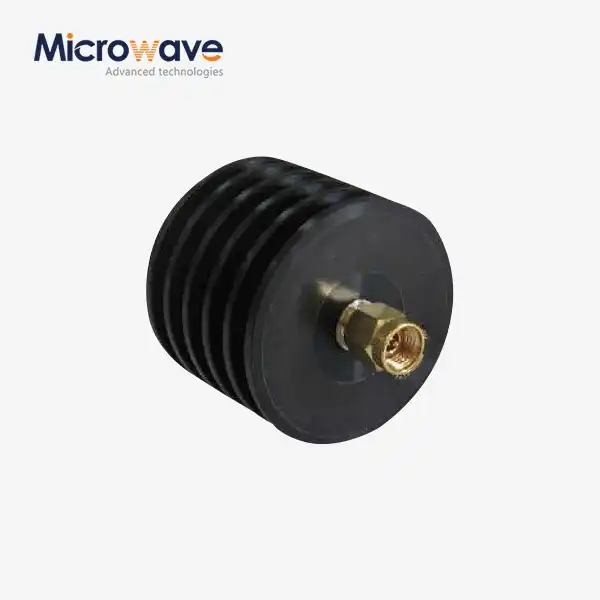
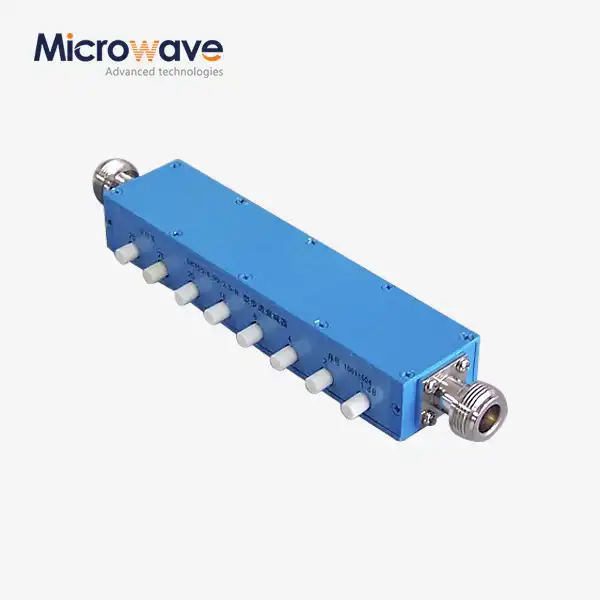
_1733809032116.webp)
